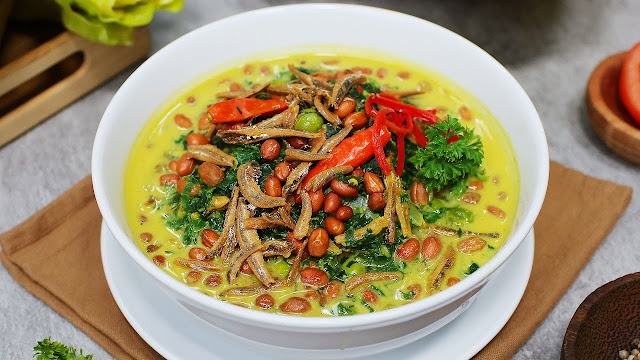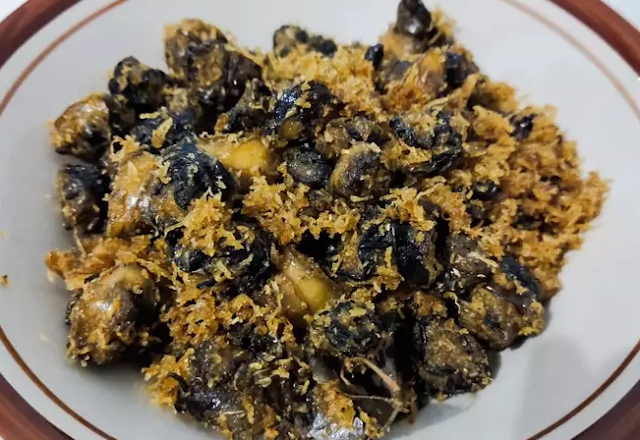
As the largest province in Kalimantan, Central Kalimantan is known for its strong Dayak culture. Around 46.62 percent of the total population in the province is ethnic Dayak.In addition, many people from the Javanese and Banjar tribes also live in Central Kalimantan. This also affects the culinary of Central Kalimantan, the majority of which are typical Dayak food.
Famous culinary tours from the province whose capital is Palangkaraya include juhu umbut rattan, juhu umbut palm and kalumpe. The food is the original food of the Dayak people in Central Kalimantan.

Juhu umbut rotan
Yes, even rattan can be used as an ingredient to make delicious dishes, such as those in Central Kalimantan. The name is umbut rattan which is a culinary owned by the Dayak tribe. Generally, umbut rattan is known as uwut nang'e.
This food is quite unique because it uses the basic ingredients of young rattan or shoots that grow at the base of the rattan.
Just like bamboo shoots, the texture of young rattan is still chewy and not hard like old rattan. But there is a difference, which is that this rattan tuber can only be used as a vegetable. Unlike bamboo shoots which can be used as other food ingredients.
The taste of young rattan is slightly bitter and savory, so it requires special seasoning in the cooking process.
First, the skin of the young rattan is removed and then cut into small pieces. It is usually cooked together with baung fish and tamarind eggplant.
Speaking of taste, juhu umbut rattan has a savory, sour, and bitter taste that is integrated with the sweetness of the fish meat. This is what makes juhu umbat rattan has a unique characteristic.

Juhu Singkah Enyuh
Well, this one is cooked using coconut umbut or singkah enyuh. This coconut umbut is the shoot of an unfinished coconut trunk that is located just above the roots of a coconut tree that is not yet 1.5 years old.
According to the Tribune, the spices used to cook juhu singkan enyuh are as simple as those used in Indonesian cuisine, such as galangal, ginger, shallots and garlic, candlenut, lemongrass, chili, turmeric, shrimp paste, and kaffir lime leaves. The uniqueness is in the tender, savory and spicy slices of coconut umbut.

Juhu umbut sawit
Juhu umbat sawit is the name of a vegetable typical of the Dayak tribe that is served during thanksgiving or weddings.
If in Java, you are familiar with bamboo shoots, a vegetable made from the core (cob) of the bamboo tree, then this singkah vegetable also comes from the cob. However, this vegetable is not taken from the bamboo tree but from the coconut tree.
The shape and color are not much different from bamboo shoots, which is white. But the difference in taste, this vegetable is much sweeter when compared to bamboo shoots. This is probably because it comes from coconut.
No wonder the Dayak tribe likes this vegetable in its raw (uncooked) state. Usually, juhu umbut sawit will be eaten mixed with chili sauce.
Muliyani, from the Public Relations section of the Central Kalimantan Provincial Government, quoted Tempo as saying that the existence of this coconut umbut vegetable has existed since the time of the ancestors of the Dayak people. Juhu umbut sawit became a mandatory dish at traditional ceremonies in the past.

Kalumpe
Kalumpe or also called karuang is a vegetable made from finely ground cassava leaves. Kalumpe is actually the Dayak Maanyan language and karuang is the name of this vegetable in the Dayak Ngaju language.
Kalumpe is made by finely pounding cassava leaves and mixed with small eggplants or aubergines. Then the spices of shallots, garlic, lemongrass and galangal are mashed.

Bangamat
Bangamat is a culinary with big bat meat as the main ingredient. For the people of Central Kalimantan, eating bats can provide health benefits, namely for immunity.
Bat meat is usually called paing by the Ma'anyan and Lawangan Dayak people. The way to cook bagamat is that the paing to be cooked is cleaned by removing nails, coarse feathers bent and back, and intestines, then the wings, feathers and meat are cooked,
For Dayak Ngaju people, paing is cooked with more spices. As for Dayak Maanyan, paing is cooked with spices, lemongrass and pikauk leaves. Paing is usually cooked with banana stem liver vegetables that are cut into pieces, the banana tree used is the fan banana tree. Bengamat can also be cooked with taro vegetables.

Post a Comment